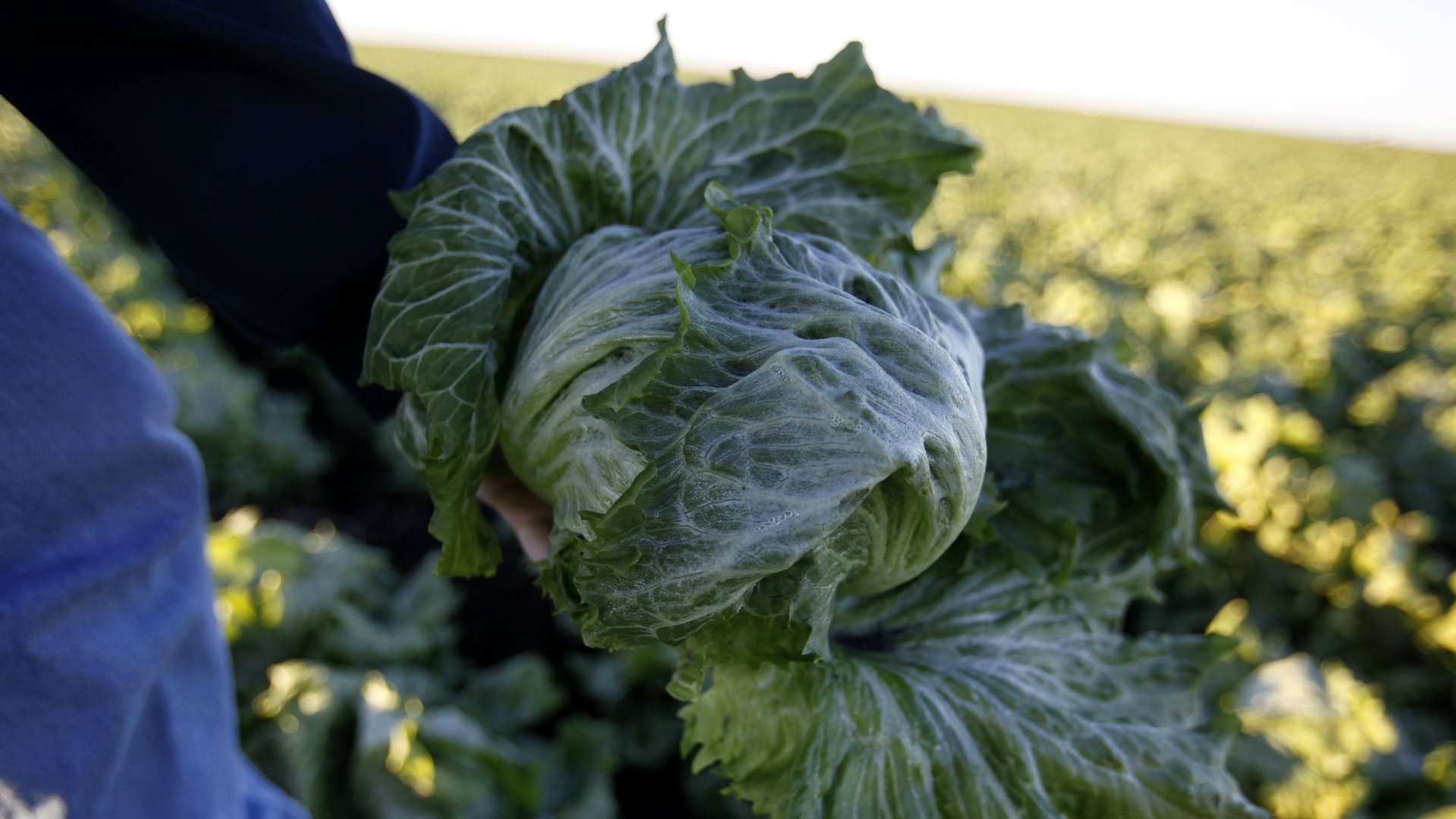The humble lettuce is revealing the power of future farm automation
The robot takeover of farm labor inched forward in a big way this week as researchers unveiled a prototype of a machine that’s able to perform a task once possible only with the human hand.


The robot takeover of farm labor inched forward in a big way this week as researchers unveiled a prototype of a machine that’s able to perform a task once possible only with the human hand.
A team of engineers at the University of Cambridge have developed a robot that can maneuver so deftly that it’s able to pick up a lettuce head, find its outer layer of leaves, and delicately remove them. The machine is able to perform this task using three tools: a camera to size-up an individual lettuce head and find its stem, an arm to roll and position the lettuce for tearing, and another arm with a suction device on the end for removing leaves.
“When you harvest a lettuce, the outer leaves of the lettuce need to be removed before the lettuce is ready to go into retail,” said Luca Scrimeca, one of the researchers, in a statement. “The leaves are soft, they tear easily, and the shape of the lettuce is never a given.”
The technology was developed by the university’s Machine Intelligence Laboratory, and it’s currently able to perform full leaf removal about 50% of the time and in about 27 seconds. The researchers say the same technology can be applied more easily to other, less delicate crops, such as cauliflower.
While this new type of robot isn’t being used in the fields yet, Scrimeca says he envisions it revolutionizing how farm labor in the future is divided and carried out.
“Instead of seeing 10 people harvesting, you’ll see 10 people supervising 100 robots doing three times the workload or 10 times the workload,” he said.
That’s perhaps good news for farmers looking for more efficient and cheap ways to harvest. It might wind up being a mechanical harbinger of the future displacement of agricultural workers, though. According to the US Department of Agriculture, roughly 2.6 million people are employed in the farming sector in America. Already research has shown agricultural work by robots will be cheaper than manual human labor.
There are still a couple years to go before workers have to really be concerned about being priced out of a job. Field robots aren’t expected to reach price parity with human workers until about 2020 for most farmers.